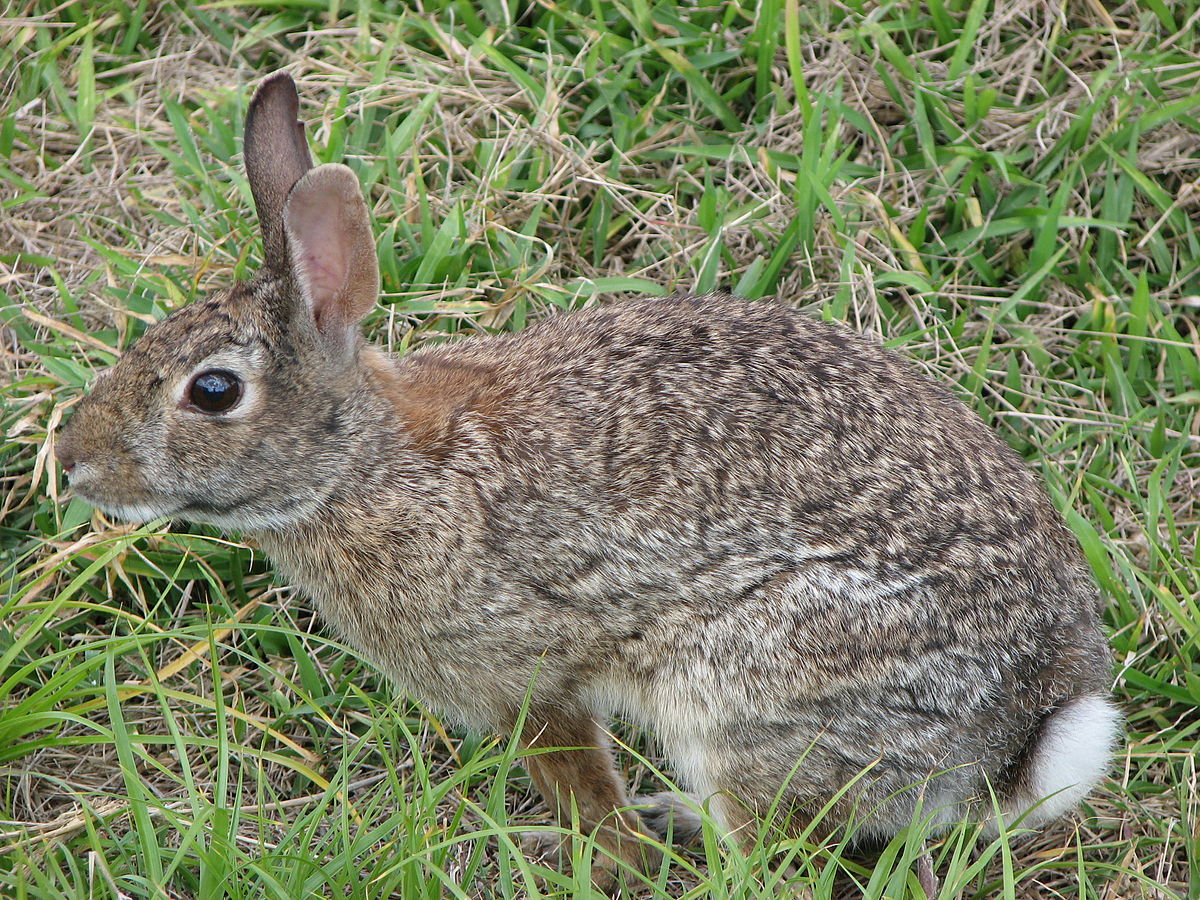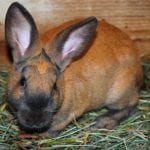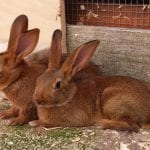Scientific Facts
| Common Name | Dice’s Cottontail |
| Scientific Name | Sylvilagus dicei |
| Life Span | Up to 8 years |
| Size (Adult) | 5 mm to 100 mm |
| Weight | 1.8 to 4.4 lbs. |
| habitat | Cloud forest habitats and paramo |
| Country Of Origin | Panama and Costa Rica |
Physical Description
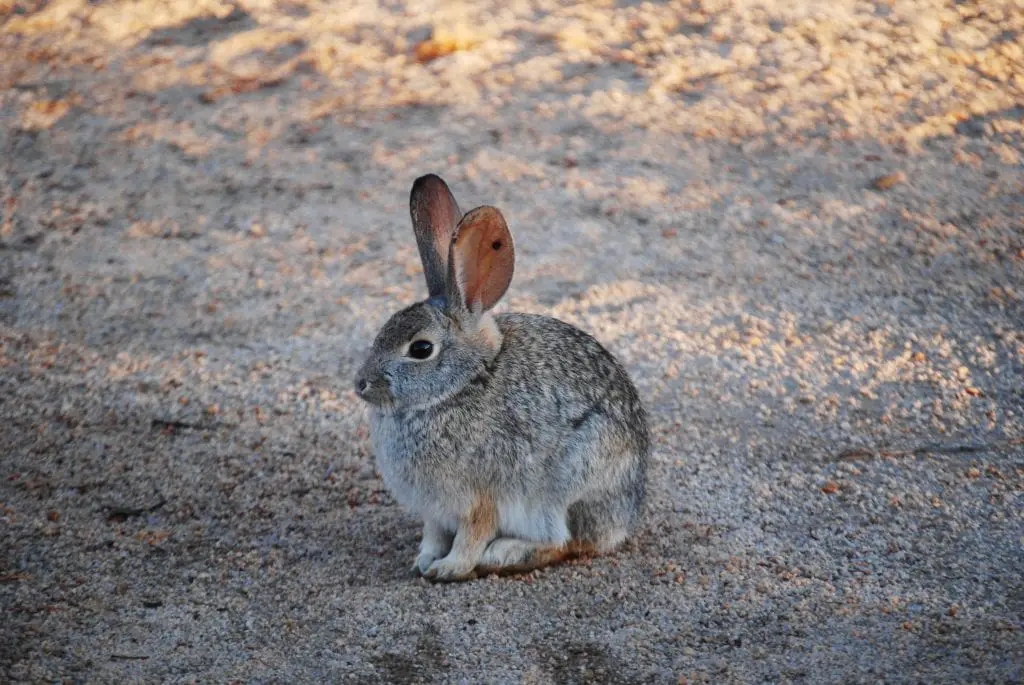
This Dice’s cottontail is commonly seen in the Cordillera de Talamanca, straddling the borders between Costa Rica and Panama. It has its habitat in the Paramo grasslands and the Alpine meadows above the tree line. It also dominates in the highly-elevated shrublands and the cloud forests filled with oak trees. The shrublands are also highly-elevated at an altitude of 3,800 meters. This is already equivalent to about 12, 500 feet in the Cerro Chirripo.
Its short tail and short ears are what best describe the Dices Cottontail. Its inconspicuous tail is black while the venter is white and gray in the underfur. It also is found in orange and brown colors on dorsal and lateral positions.
See the upper and rear portion of the lower eyelids featuring a buffy eye-ring circumscribing. The eye also shines bright and red. The darker the color is too on the dorsal surface of the head, coming from the rhinarium down to the ears. There are mostly black and dark patches on the upper part of the head.
Fast Facts
Here are some of the fast facts about the Dice’s cottontail.
Best Suited for: Rabbit owners, Families Having Residences with green vegetation and short grasses around their residences
Temperament: Active but also stays motionless when exposed to sunlight
Comparable Breeds: Forest Rabbit
Colors
As already mentioned above, Dice’s cottontail is black and brownish color, mainly because of its back. While its flanks are greyish and black color. So far, there is a combination of colors observed in this rabbit.
Lifestyle and Behavior
The Dice’s cottontail is a nocturnal animal, whereas it is highlighted that it is active in the morning. That means to say that a rabbit owner like you would like it as a pet. It also can be seen as active at dusk.
What you will notice about it is that it stays motionless when light is introduced to it. Once you approach it, it also quickly escapes from you. It feels just so solitary having been around it.
Also, this specie prefers open areas and forest edges, which is why you need to provide open spaces for it. In the wilds, Dice’s cottontail becomes an essential component of the diet of carnivores in particular to coyotes.
It is recommended to keep the Dice’s cottontail in captivity. There should be a compartment wherein the animal can be free. Or else, it won’t get excited anymore, and it will only likely injure itself as it dashes against the sides of the cage.
Habitat
Dice’s cottontail typically has an indoor cage or pen and a safe place to run. It also is good if there be an outdoor cage or a pen close to your garden. It then can be easy for you to feed it on green vegetation and short grasses.
Its habitat in the wild is that it is commonly found in the Paramo. That includes the areas of Cerro de la Muerte, Cerro Chirripo, and all other areas of the Talamanca Mountain Range. It is, even more, abundant along the forest edges and the roads at the La Auxiliadora. That is to say, even the areas of Paramo in the National Park of Los Quetzales, you will see them roaming around.
In the adjacent areas and valleys of Coto Brus, there you will the Dice’s Cottontail close to the agricultural areas and gardens. After the fires in the forest edges, Dice’s cottontail can be seen in the young shoots of the high-elevation bamboos. Their feeding areas are marked with many small and roundish fecal pellets.
Eating Habits
Just the same with other cottontail rabbits, Dice’s Cottontail eats a wide range of plant foods that include sedges, grasses, leaves, sprouts, buds, fruits, and bark. It also primarily eats legumes, grasses, annuals, weeds, succulent annuals, and occasional garden vegetables during the summer months. And such a captive diet consisted of a variety of grasses, greens, hay, and clover just makes sense for this rabbit.
Grooming
All rabbits are considered as fastidious groomers. That also includes the Dice’s cottontail that insists on being tidy and clean as it licks itself like a cat. It also tends to ingest too much hair. Once the hairballs form, they could block the stomach exit. That’s when it might get starved to death with its stomach appearing very fat.
Brush the rabbit every week. Remove any loose hair while you get it ready for multiple daily brushings. Not so much information has been shared about it getting rid of the old coat of fur in a day or a couple of weeks. But one thing is sure is to not neglect once it starts shedding. Remove a large percentage of hair by way of pulling it out using your hand. Remove its hair right away, or the rabbit will do it during the grooming process.
Temperament and Personality
No single information has been presented about the Dice’s Cottontail. But studies emphasized that most cottontails are a kind of solitary animals. That means to say that Dice’s Cottontail also is solitary. It also falls aggressively intolerant of other rabbits of the same species. That leads you to be careful at combining them with other cottontail rabbits in one cage.
Lifespan and Health Concerns
In captivity, the lifespan of Dice’s cottontail can reach up to 8 years. They also are the same as other rabbits of the same breeds that can reproduce by a single year of age. Their reproductively-matured doe can have about 5 litters of 3 to 8 young within a single season.
Once when Dice’s cottontail is domesticated, the health reasons could come as follow: snuffles, overgrown teeth, uterine tumors, myxomatosis, hairballs, and calicivirus. Good thing, we humans won’t be affected by any of these diseases.
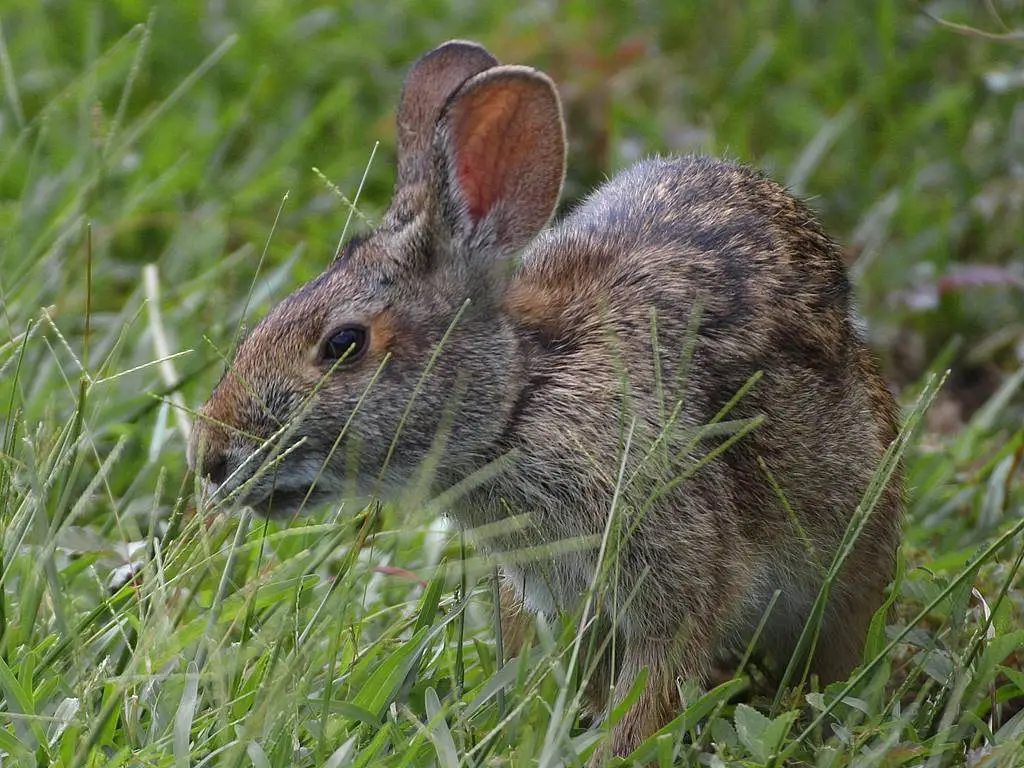
How to Care
When you decide to have Dice’s cottontail, make it sure that it is well-taken care of. Keep it in a quiet place, and be sure that it will not be attacked by a cat. Or else, it may be contaminated by a tooth or claw that will kill the baby in just a few days. It must as well be taken to a veterinarian to be given with safe antibiotics.
Prepare a safe place. For a baby rabbit, a cardboard box having high sides seems more of an ideal option. Make sure that there will be air holes in it. The box also must be covered. Place down the plush fabric in it. An extra plush will also create a nest. Add more of a nesting material if it is available. Make use of the fur from a domestic rabbit. But never make use of a fur obtained from predators. Place a hot pad on one end of the box so that the babies be heated. They will feel the warmth brought by the hot pad.
For adult Dice’s Cottontail, understand that it lives on a healthy diet. It must be introduced to a lot of attention from you as an owner and also exercise. It should as well live a healthy and happy life. When the time comes that things go wrong, you must talk to your veterinarian.
Keep in mind that rabbits such as the Dice’s Cottontail are good at hiding their symptoms. That is why you must pay attention to the behavior and appearance of the rabbit. There are times that a rabbit that looks down already is a sick rabbit. Handle and check the rabbit regularly. Pay attention to the basic things that will make a healthy rabbit.
Ears, Eyes, and Nose- The ears, eyes, and nose should always be clean, clear, and bright looking. There should also be no such thing as discharge. If the Dice’s cottontail shakes its head more often while it scratches around the ears, these may all be a sign of ear mites. Introduce your pet to a veterinarian to attend to its needs.
Weight- The Dice’s cottontail should have a healthy weight wherein it should be sleek and slim enough. Feel its ribs right below the skin with no think layer of fat. It will be a good idea to have a monthly weigh-in.
Coat- The coat of the Dice’s Cottontail should be smooth, shiny, and flat. If there is any dandruff, it maybe is about time to see a vet. The rabbit could also get some fleas if there are dogs and cats around. If there already are fleas, treat the rabbit with a solution that can be found at the vet clinics. Make sure that you get what is meant for the rabbits. Brush the rabbit using a soft brush. This will help keep the coat looking healthy and nice. It may as well require brushing.
Teeth- The teeth of the Dice’s Cottontail are just the same with other breed species that grow throughout their lives. Teeth problems are just so ordinary. Make sure to provide them enough chewing materials like the apple, willow, and citrus tree branches. The goal is to keep their teeth completely worn down. If it hesitates to drool or eat, it may be a sign of a tooth problem. It will need to be checked out by a veterinarian.
Claws
The nails of the Dice’s cottontail would often require some clipping. This must be done after eight weeks. If you are still not sure on how to do this, ask your vet so that you will be guided on how to cut it easily.
Happiness- Always keep in mind this one factor. If the Dice’s Cottontail is happy, it’s when you expect it to be healthy, too. Be careful of confining the rabbit to a place where its pleasures and natural instincts are taken away in life. Make sure to spend time with it so that it won’t get lonely. Also, create a space where it can run around, munch on grass, and dig to its heart’s content.
Special Care Considerations
Rabbits such as the Dice’s Cottontail need firm but still gentle handling from at an early age. It will also start to get used to its new surroundings. Pick it up by placing your hand below your chest. The other hand will also need to support it.
When you pick it up, hold it securely and comfortably against your chest. The spine of the Dice’s cottontail is also fragile. It may as well fracture if the hind legs do not dangle. It might also give a strong kick. Make sure that you know how to handle it properly. It needs your supervision at all times.
Sneak up on the Dice’s Cottontail and give it some gentle strokes. Then, you can proceed to pick it up. If it is fearful and nervous about being picked up, it is nice to spend some time on it on the floor. Set up an area where you can get it down and at its level. Allow it to come to you on his approaches and terms. Offer it a treat and gently pat it. Take things slowly, and never rush things. Do not force it if it struggles against you. As you handle it more, the more it becomes friendlier and quieter as it is.
Breeding
Breeding Like Rabbits (More Bunnies!)
Only a little information is found considering its breeding. But, it is said that the species breed all-year-round. Its kittens are observed between the months of September and April.
Special Notes
The Dice’s Cottontail can be a good friend as a rabbit. It is a sociable creature that craves the companionship of its kind. The bond formed between them is so powerful. Once a companion is lost, it could cause illness and depression. It may thrive and love with companionship. But, the process can take patience as it turns to be so slow. It will take time and commitment to foster the relationship.
Work with the Dice’s Cottontail daily for about fifteen minutes. When you work with them always, the faster the bonding process will be. A bonded pair will often require a few months before they work. Never separate them when they already have bonded. If one Dice’s Cottontail gets sick, take the partner too. Get them both checked if anything is contagious.
American Rabbit Breeder’s Association
Look up to the American Rabbit Breeder’s Association that is a non-profit organization to turn to. They are dedicated to the development, improvement, and promotion of the domestic rabbit, such as Dice’s cottontail. When you decide to have Dice’s cottontail as a pet, all you need to do is to contact them.
The association holds almost twenty-thousand members throughout Canada, the United States, and abroad. The members range from commercial raisers, breeders, and pet owners. So whether you own rabbits for commercial use, show, or for a pet, we have been dedicated to the responsible and ethical promotion of these rabbits.
Cost
Not enough information is shared yet considering the cost of the Dice’s cottontail. But of course, it will depend on the quality of the rabbit and the location to where you purchase it. Additional costs incurred will vary from the type of housing chosen, health care needed, number of Dice’s Cottontail to raise, and many more.
Better to opt for a quality Dice’s Cottontail. Some important considerations include water and feed dishes, grooming items, pellet feed, treats, bedding, toys, cleaning items, and basic health care.

Availability-Where to Get One
Check out the nearest local pet stores to see if they sell Dice’s Cottontail. Some reputable websites and online stores can also be found that offer Dice’s Cottontail. They can deliver these rabbits to your home. Some breeders that sell these Dice’s Cottontail. Better to contact one of them!
FAQs
How big the Dice’s Cottontail is?
The Dice’s Cottontail measures 37-centimeters in length (large adult) and 1.4-kilograms in weight (large adult). That means to say that they are a rabbit breed among the cottontail rabbits.
What are those foods known to be toxic for the Dice’s Cottontail?
Foods like bread, biscuits, rice, chocolate, lollies, potatoes, chips, and avocadoes should never be introduced to the Dice’s Cottontail.
Are the Dice’s Cottontail also run fast?
Yes, they are the same as other Cottontail rabbits that can run from 25 to 45 mph.
What is faster a Dice’s Cottontail or a hare?
Understand that a hare is generally faster and larger than a rabbit, including Dice’s cottontail. The hare has larger feet and longer ears than the rabbit. The hare also has strong and long hind legs than this kind of rabbit.
Can Dice’s Cottontail be a pet?
Yes. Dice’s Cottontail is also bred to thrive on a diet that can be prepared by humans. It will need different foodstuffs. Although sometimes it can be difficult to keep it alive without its mother.
What do you still call a Dice’s Cottontail baby?
A baby, Dice’s Cottontail, is called a kit. While a male Dice’s Cottontail is a buck and the female Dice’s Cottontail is a doe.
What animal can kill a Dice’s Cottontail?
Coyotes, dogs, foxes, cats, birds of prey, wolves, and many more can feed on the Dice’s Cottontail.
What should Dice’s cottontail sleep on?
The Dice’s Cottontail should sleep on a cage that is a minimum of 5 times the size of the rabbit. Place a rabbit condo or a cardboard box inside the cage. That way, the bunny will have a comfortable place to hide. It will also respect its need for some quiet time.
What the Dice’s Cottontail is most afraid of?
Dice’s cottontail is naturally afraid of cats, dogs, and birds of prey acting as predators.
What does it mean when the Dice’s Cottontail stare at you?
If the Dice’s cottontail stares at you, what it wants is your attention. If its nose is twitching and its ears are erect, there is something that is catching its attention. You need to react as it is what it wants.
